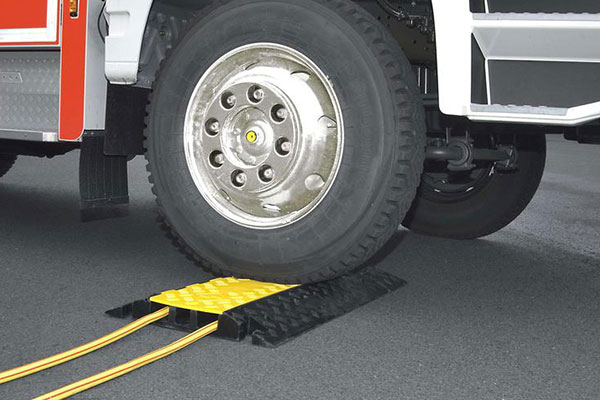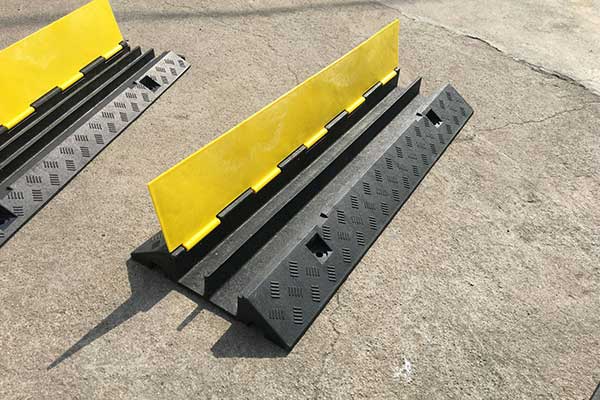What is the Purpose of a Cable Ramp?
In environments where cables, hoses, or pipes run across the ground, protecting them is crucial for safety and efficiency. This is where cable ramps come into play. But what exactly is the purpose of a cable ramp, and why is it so important? Let’s dive into the key roles cable ramps serve across various industries.
What is a Cable Ramp?
A cable ramp—also known as a cable protector—is a durable structure, usually made from rubber, polyurethane, or heavy-duty plastic, designed to cover and protect cables, wires, or hoses. These ramps typically feature channels that allow cables to be neatly placed inside, with a top cover that closes securely. Some models are modular, meaning they can be connected to extend over larger areas.

The Main Purposes of a Cable Ramp
1. Protects Cables and Hoses
Cables left exposed on the ground are highly vulnerable to damage from cars, trucks, forklifts, and even heavy foot traffic. A cable ramp acts as a physical barrier, preventing crushing, tearing, and fraying. This protection extends the life of your electrical cords, communication lines, or fluid-carrying hoses, saving significant replacement and repair costs.
2. Ensures Safety for People and Vehicles
Loose cables can easily become trip hazards for pedestrians or create obstacles for vehicles. Cable ramps provide a smooth, stable surface, reducing the risk of trips, falls, and accidents. For vehicles, they minimize sudden jolts or tire damage when crossing over cables.
3. Maintains Operational Efficiency
In workplaces like construction sites, manufacturing plants, or event venues, delays caused by damaged cables or safety incidents can be costly. By using cable ramps, businesses can maintain a safe, organized environment, ensuring continuous operations without unexpected downtime.
4. Enhances Organization and Aesthetics
Cable ramps help manage and organize messy cable setups. Instead of tangled, scattered wires across the floor, a cable ramp gathers and protects them neatly. This creates a more professional and efficient-looking workspace or event setting.
5. Supporting Vehicles and Heavy Loads
Certain cable ramps are built to withstand heavy weights, including vehicles like trucks, forklifts, and even construction machinery. These heavy-duty cable ramps allow safe crossings without crushing or damaging the cables underneath, maintaining operational integrity and ensuring the safety of drivers and pedestrians.

Common Applications for Cable Ramps
Cable ramps are incredibly versatile and used across many industries, including:
- Construction Sites: Protects temporary power cables and keeps the site organized.
- Events and Festivals: Secure sound system wires and lighting cables.
- Warehouses and Factories: Manage hoses and electric wires in heavy equipment areas.
- Roadwork and outdoor installations: Protecting temporary wiring across busy streets.
- Offices: Safeguard data and electrical cables running across workspaces.
How to Choose the Right Cable Ramp
When selecting a cable ramp, consider:
- Load Capacity: Match the ramp to the weight of expected traffic.
- Number of Channels: Determine how many cables need to be protected.
- Environment: Choose materials suitable for indoor or outdoor use.
- Visibility: Some ramps come with bright colors or reflective strips for extra safety.
Conclusion
A cable ramp is a simple yet essential tool for protecting cables and promoting safety wherever cables are used. Whether it’s preventing trip hazards, avoiding costly cable damage, or ensuring compliance with safety standards, cable ramps play a vital role across many industries.
If you’re looking for durable, reliable cable ramps for your project or business, you can contact us directly for more information.

